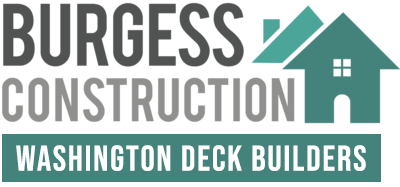Understanding the structural integrity of decks is crucial for safety and durability. The American National Standards Institute (ANSI) has established comprehensive deck load-bearing standards to ensure that decks can withstand various loads without compromising structural integrity.
This article delves into the science behind ANSI’s deck load-bearing standards, exploring key concepts, relevant entities, and considerations for deck builders, especially those operating in Washington.

Understanding Load-Bearing Capacity
The load-bearing capacity of a deck refers to its ability to support weight without experiencing structural failure. This encompasses various types of loads, including:
- Dead Loads: The permanent, static weight of the deck structure itself, including all its components.
- Live Loads: Variable weights that the deck may support during its usage, such as people, furniture, and movable equipment.
- Environmental Loads: Forces exerted by environmental factors like wind, snow, and seismic activity.
ANSI’s standards provide guidelines to ensure decks are designed to accommodate these loads effectively.
How ANSI Standards Ensure Deck Safety
To accommodate these loads, ANSI-approved standards provide deck builders with guidelines on materials, load distribution, and structural reinforcements.
However, ANSI itself does not enforce building codes. Instead, local and national codes, such as the International Residential Code (IRC) and state-specific regulations in Washington, incorporate ANSI standards to establish legally enforceable requirements.
Development of ANSI's Deck Load-Bearing Standards
ANSI collaborates with organizations like the Steel Deck Institute (SDI) and the American Society of Civil Engineers (ASCE) to develop comprehensive standards. These standards are based on extensive research, testing, and real-world data.
For instance, the ANSI/SDI C-2011 Standard for Composite Steel Floor Deck-Slabs offers guidelines on the design and construction of steel deck systems.
In addition to ANSI guidelines, NADRA deck safety standards play a vital role in deck stability—learn more about them here.
Scientific Principles Underpinning Load-Bearing Standards
The development of load-bearing standards is grounded in fundamental engineering principles:
Material Properties
Decks rely on different construction materials, each with unique load-bearing characteristics. ANSI standards account for these properties to ensure proper material selection.
Wood
Wood, commonly used in residential decks, possesses unique strength characteristics that depend on factors such as species, grain direction, moisture content, and treatment methods.
Steel
Steel decks, on the other hand, are renowned for their high strength-to-weight ratio and uniform quality.
Concrete
Concrete decks benefit from their superior compressive strength, making them suitable for high-load scenarios, including public platforms and commercial spaces.
Check here to learn why AWPA standards for deck materials are essential for durability, safety, and compliance when building a long-lasting deck.
Structural Analysis

Structural analysis employs mathematical and computational models to simulate and predict how decks respond to loads, ranging from everyday use to extreme conditions.
Modern deck engineering incorporates structural analysis techniques to predict how decks respond to various loads. ANSI standards utilize these methodologies:
- Load Testing & Simulation – Simulations like Finite Element Analysis (FEA) predict stress distribution and deformation under different conditions.
- Beam & Joist Calculations – Ensures proper spacing and dimensions of deck components to handle live loads.
- Post & Footing Requirements – Determines minimum post size and footing depth based on soil conditions and expected loads.
In seismic zones or heavy snowfall areas, extra reinforcements or deeper footings may be necessary to comply with ANSI safety margins.
Safety Factors
Safety factors are integral to ANSI standards, providing essential margins to account for unforeseen loads, material imperfections, and unpredictable environmental conditions.
Typical safety factors range from 1.5 to 2.0, meaning decks are built to support 50% to 100% more than the expected load. These safety margins protect against material imperfections, poor installation, or extreme weather conditions.
As a best practice, builders should always exceed minimum requirements to enhance durability and safety.
- Through careful consideration of material properties, rigorous structural analysis, and the implementation of prudent safety factors, ANSI load-bearing standards ensure decks meet both everyday and extreme demands, significantly enhancing public safety and structural durability.
Build a Safe and Durable Deck with Burgess Construction
Ensuring your deck meets ANSI’s load-bearing standards is essential for safety and longevity. At Burgess Construction LLC, we specialize in designing and building structurally sound, code-compliant decks for homes and businesses across Washington.
With our expertise in deck engineering, material selection, and load-bearing calculations, we guarantee durable and reliable outdoor space.
Contact Burgess Construction LLC today for a consultation and let’s create a stunning, secure deck for your property!
